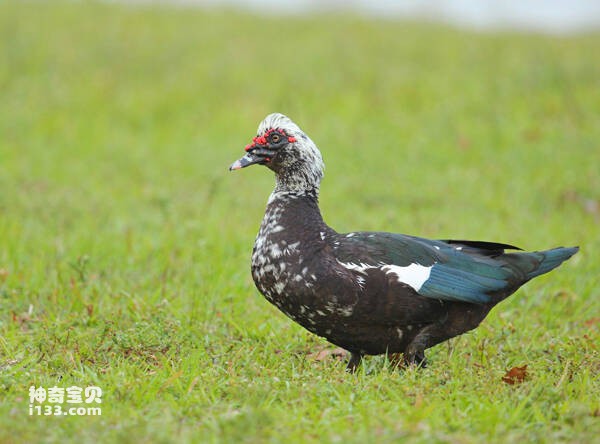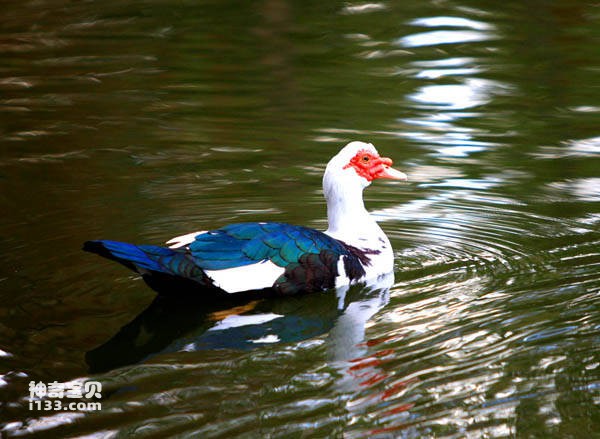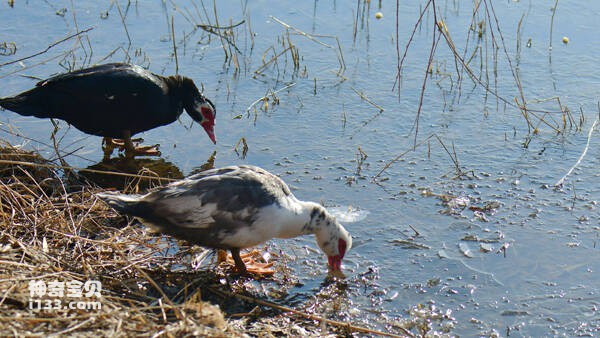Cairina moschata
IUCN
LCBasic Information
Scientific classification
- name:Cairina moschata
- Scientific Name:Cairina moschata,Muscovy Duck
- Outline:Waterfowl
- Family:
Vital signs
- length:66-84cm
- Weight:1250-3000g
- lifetime:About 20 years
Feature
The base of the beak and around the eyes have red or dark skin nodules, fluttering in the water, but not good at swimming in the water for a long time
Distribution and Habitat
It is distributed in Argentina, Belize, Bolivia, Brazil, Colombia, Costa Rica, Ecuador, El Salvador, French Guiana, Guatemala, Guyana, Honduras, Mexico, Nicaragua, Panama, Paraguay, Peru, Suriname, United States, Uruguay, Venezuela, Bolivarian Republic, Trinidad and Tobago, Chile Puerto Rico.
The wart-nosed duck is native to Central and South America to the eastern Andes. They inhabit lakes and slow riverfront trees of tropical lowland forests and occur in brackish swamps and coastal lagoons during the dry season.
Appearance
The wart-nosing duck has a length of 66-84 cm, a wingspan of 120 cm, a female weighing 1250 grams, and a male weighing 3000 grams. The body is strong and hypertrophy, the body is slightly flat, the front tip is narrow and the back is long oval. The head is large and stubby, the beak is short and narrow, bright red or dark red. The base of the beak and around the eyes have red or reddish black dermatomas that extend broadly and thickly on both sides of the head. No feathers from eye to beak. The eyes are bright red. The chest is broad and flat, and the wings are large and long and strong. The legs are short and stout, red, orange or black. The toe claws are hard and sharp, and the webbed claws are large and thick. The body feathers are pure black, pure white, black white or white mixed with blue blue and other kinds of.
Details
The Muscovy Duck (Cairina moschata) has no subspecies. The body color of artificially domesticated warty rhinoconic ducks is mostly pure white, generally known as "white fan", but there are also mixed color types with black and white feathers, similar to the body color of wild warty rhinoconic ducks.

The wart-nosed ducks gather in small groups of about 30, and do not gather in large groups even when moulting. Behavior is cautious and timid, the male is not territorial, the mate bond is relatively loose, and the pair does not last long. Like warm waters, flapping wings in the water, but not good at swimming in the water for a long time. Cluster life, gentle temperament, clumsy movement, smooth gait. When resting, stretch your head under the wings, in a "golden rooster independent" shape. The male bird often makes a low, "milly" call, and the female bird makes a soft "Na na" call.
The warty nosed duck is mainly active at night and in the early morning. It lives and feeds in shallow waters, and is sometimes found in meadows and on shore. It is a vegetarian, feeding mainly on the roots, seeds, stems and leaves of aquatic plants, but also insects, mollusks, crustaceans and small vertebrates such as small fish and reptiles.

The breeding season varies from February to March in Guyana, from June to November in Venezuela, from July to November in Panama, and March in Bolivia and Peru. Nests are built in different locations depending on the environment, with palm trees, huts, old nests of birds of prey, and even multiple types of nests built on the ground, or in large cracks in riverbanks with thick vegetation. Female ducks line the base of the nest with breast feathers and lay a clutch of up to 21 eggs in 9 to 15 days. Incubation period varies from 30 to 35 days. Although the production rate is not high, only 2 or 3 young ducks can grow.
The Muscovy duck is an excellent lean meat type duck, Muscovy duck meat taste beautiful and tender, no greasy feeling, with special flavor, is a winter supplement food. The production of Muscovy duck has been paid attention to internationally, and the number of breeding has been increasing, among which France has the largest number of breeding. Four specialized high-yield lines (R31B41R51 and B61) were developed by Grimaud in France. China's verrucoconic duck breeding development is rapid, Fujian, Hainan, Guangdong, Guangxi, Zhejiang, Jiangsu, Jiangxi, Hunan and Anhui provinces and regions of breeding more, Hubei, Shanghai, Sichuan and other provinces have also begun to introduce breeding, breeding, gradually replace some other wild duck species.

The duck has the characteristics of strong disease resistance, resistance to extensive feeding, less subcutaneous fat content, high lean meat rate, delicious meat taste, fast growth, large weight, coarse food tolerance, easy fattening, less carcass fat content, good performance of growing fat liver and so on. Reared under normal conditions for 1.0 weeks of age, male birds weigh 3000-3500 grams and female birds weigh 1800-2200 grams. The carcass fat content was 15%-18%, which was 10 percentage points lower than that of Peking ducks. Lean meat rate is high, the chest and leg muscles account for 27%-30% of the carcass, and the meat is delicious and rich in game.
The root-nosed duck can effectively use the feed containing more coarse fiber. The feed benefit of Muscovy duck was higher than that of Peking duck under the same conditions. Under normal circumstances, Muscovy duck feed to meat ratio is 2.7-3.0:1. Breeding ducks can eat no more than 180-200 grams per day at the peak of spawning under free feeding conditions. It has strong compensation ability in growing period and can save concentrate feed in breeding period. The consumption of feed for foie gras production is lower than that of geese and other duck species, and the stuffing operation is simple. Each duck produces fat liver weighing 325-444 grams, and the texture is tender and fatty, delicate and delicious, and the pass rate is high. At the same time, it can also get about 30% more delicious and expensive duck meat and high-quality down.
Listed on the International Union for Conservation of Nature (IUCN) 2013 Red List of Threatened Species ver 3.1 - Low Risk (LC).
Protect wild animals and eliminate wild meat.
Maintaining ecological balance is everyone's responsibility!








